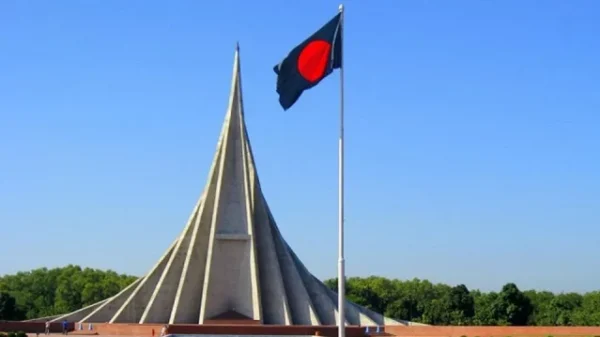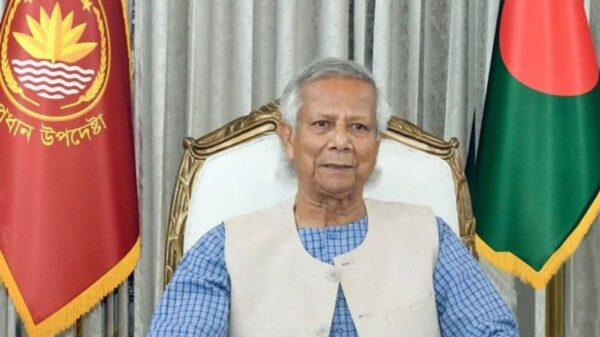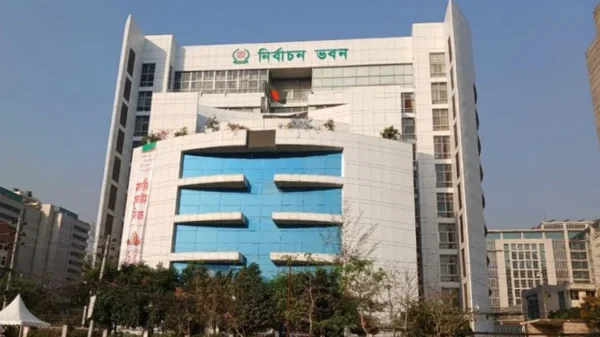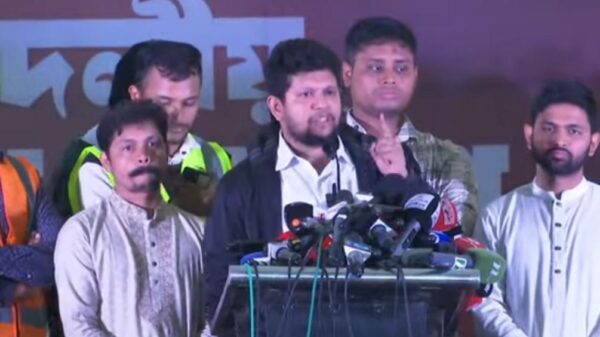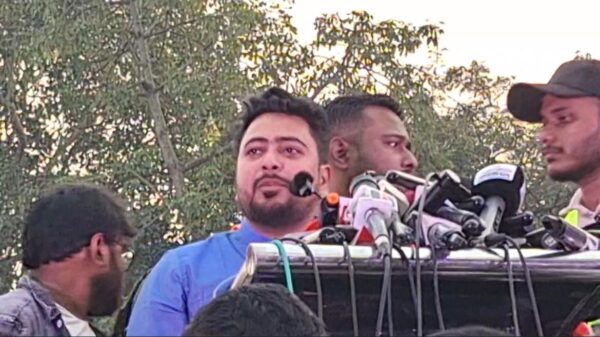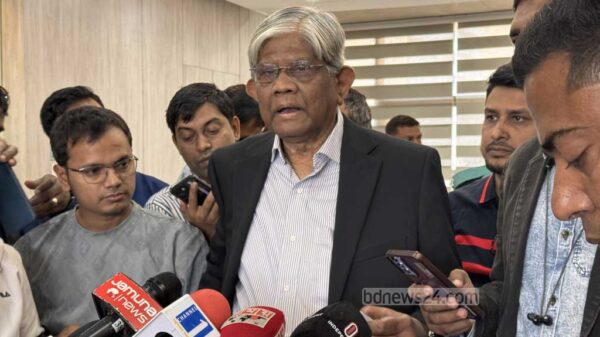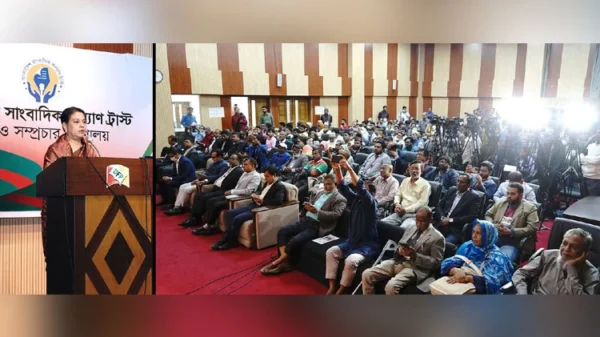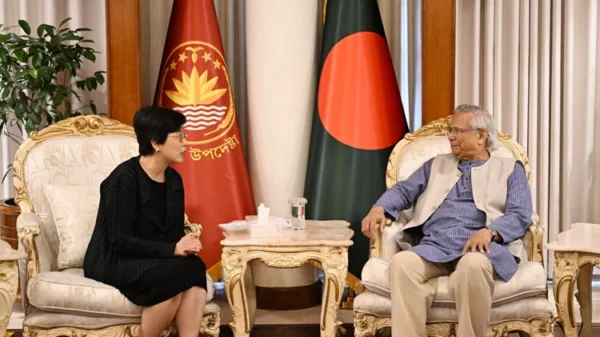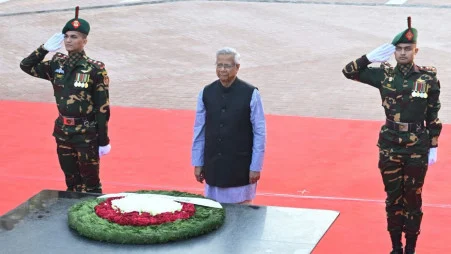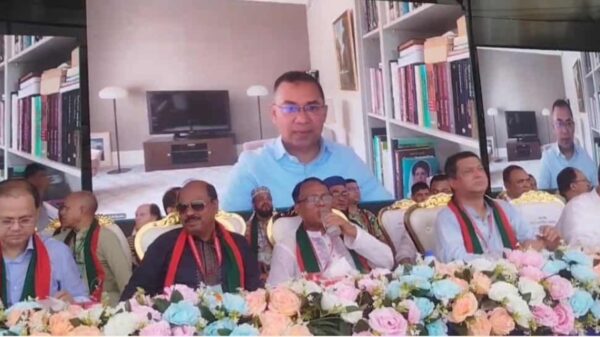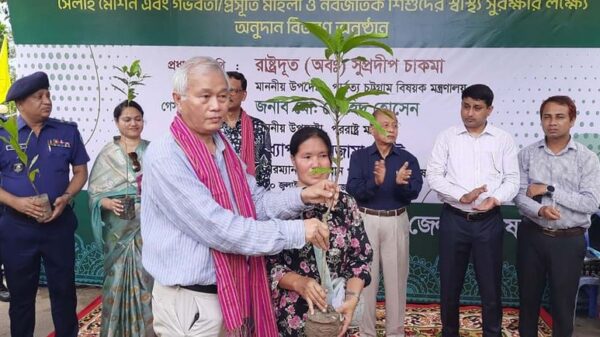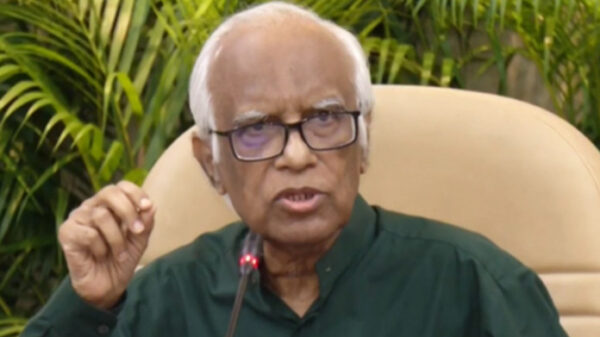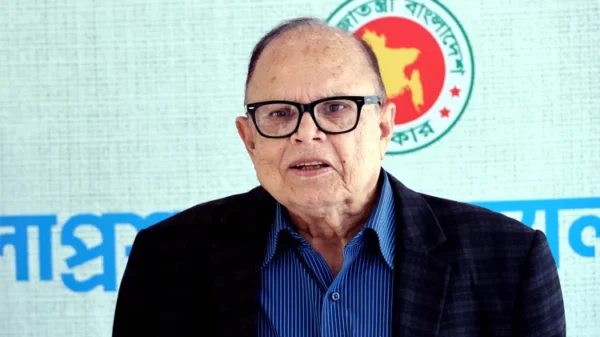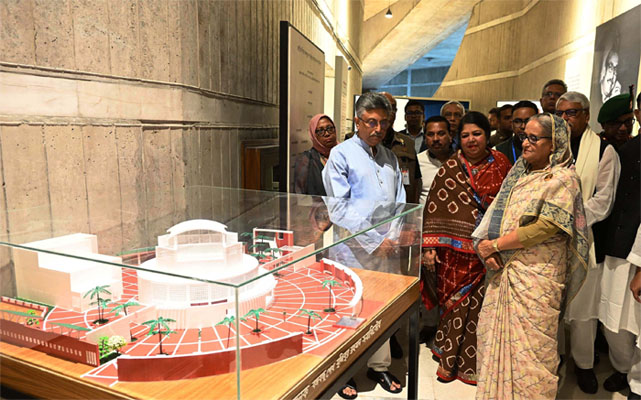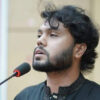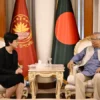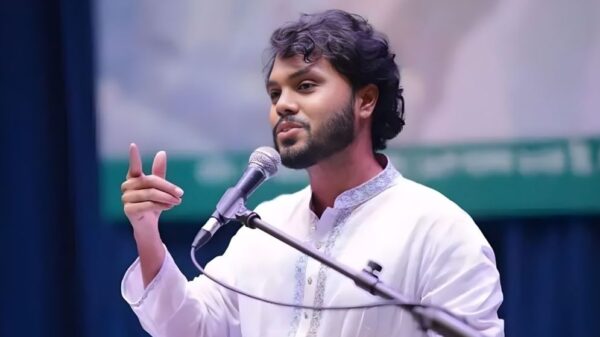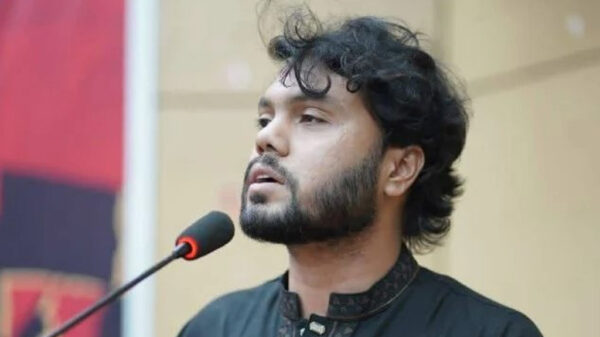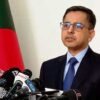Staff Reporter:
Prime Minister and Leader of the House Sheikh Hasina yesterday inaugurated the ‘Mujib and Independ-ence’ at Jatiya Sangsad Bhaban.
After the inauguration, the Prime Minister visited “Mujib and Independence” installed on the level 1 of Jatiya Sangsad Bhaban.
During the visit, Speaker Dr Shirin Sharmin Chaudhury was present, according to a release from Par-liament Secretariat.
The Speaker informed the Prime Minister about various still pictures and events shown in “Mujib and Independence”.
After the visit, the Prime Minister signed the visitors’ book and praised “Mujib and Independence”.
She congratulated all including the Speaker for establishing “Mujib and Independence” in the National Parliament.
Deputy Speaker of Jatiya Sangsad Md. Shamsul Haque Tuku, Chief Whip Noor-e-Alam Chowdhury, Whip Iqbalur Rahim, Whip Abu Sayeed Al Mahmud Swapan, Whip Nazrul Islam Babu, Whip Shaimum Sarwar Kamal, Whip Masrafe Bin Mortaza and Whip Sanjida Khanam were present.
Later, members of National Parliament including Cabinet members visited “Mujib and Independence”.
“Mujib and Independence” is a unique attempt to preserve and spread the history of Bangladesh’s great liberation war and independence from generation to generation under the leadership of Bangabandhu Sheikh Mujibur Rahman, the greatest Bangalee of all time and the great architect of Independence.
In the first room, from the ancient history of Bengal, starting from Bangabandhu’s childhood and adoles-cence, from childhood to becoming “Mujib Bhai” in his youth, the partition of India and the establish-ment of Pakistan, the turbulent language movement and the change in the political landscape of the 1950s, the six-point of the Bangalee’s Emancipation Charter, the mass uprising of the 1970s and shown up to the 1970 election.
Starting from the context of victory in the historic elections of 1970, the flow of events in the second room has progressed towards the history of the 1971 War of Liberation.
Bangabandhu’s historic Speech on March 7, mass killings by Pakistani occupation forces on March 25, declaration of independence on March 26 in the first hour, the relentless struggle of people from all walks of lives in the long nine-month bloody war and the sacrifices of freedom fighters and heroes have been placed in this room.
In the third room, along with the glorious victory of Bangladesh, the heroic contribution of the freedom fighters, there is also the golden history of Bangabandhu’s homecoming, reconstruction of the war-torn country, and consolidation of Bangladesh’s identity in the international arena.
The struggle life of Bangamata Sheikh Fazilatun Nessa Mujib and some moments of Bangabandhu’s fam-ily life are displayed. Then the black chapter of the history of Bangladesh took place on August 15, 1975.


